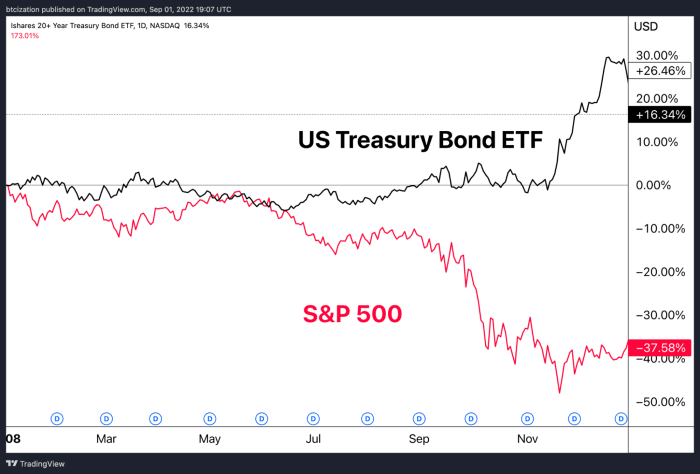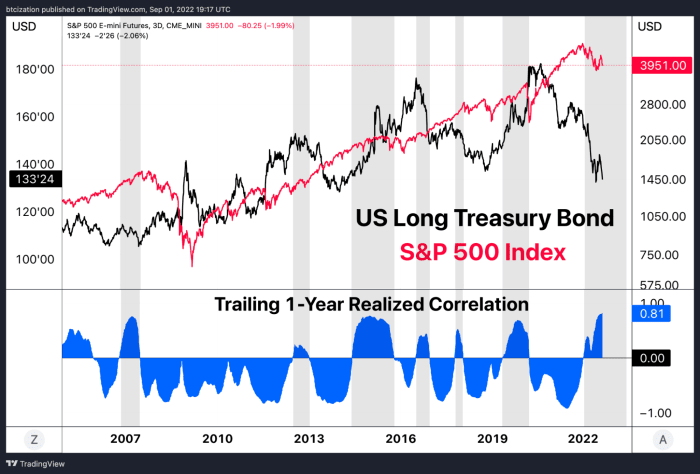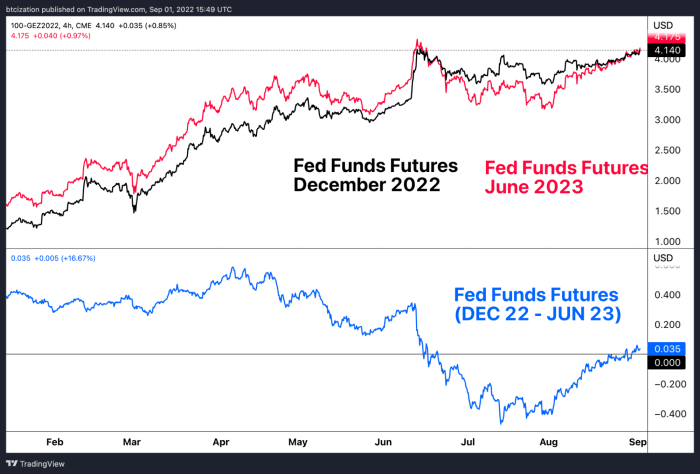The following is an excerpt from a recent edition of Bitcoin Magazine Pro, Bitcoin Magazine’s premium markets newsletter. To be among the first to receive this information and other on-chain bitcoin market analysis straight to your inbox, subscribe now.
Rising prices
Yesterday’s initial jobless claims data release came in lower than expected, signaling a stronger labor market, which is another sign that “good news is bad news.”
We can see some of these developments playing out via the Eurodollar futures curve where the expected market fed funds rate is steepening (more rate hikes), and is now expected to exceed 4% in the second half of 2023. This is consistent with the Federal Reserve. own projections that they communicated to the market:
The S&P 500 Index is now facing its fifth consecutive daily red candle and is trading below some key technical areas that served as support.
After months of compression, volatility is also on the move, with the VIX beginning to climb alongside higher 1-month realized volatility across bitcoin, stocks, and treasury bond futures.
As we head into another long holiday weekend, it was a turbulent day in the market with weakness and heightened selling pressure manifesting across a number of asset classes. Some of the biggest moves were the continued strength of the DXY as major market currencies continue to bleed against the US dollar and rising sovereign debt yields with the US 10-year above 3.25% . Yields from major European economies (Germany, Italy, Spain and Greece) are also rising.
The “rates have peaked” argument has so far been a mistake or at least an early call, as the market rolled back its consensus expectations for a pause or pivotal timing from the Federal Reserve at the start. of 2023. The thesis of a deflationary collapse and rapid return to a 2% inflation target continues to look further ahead, as many members of the Federal Reserve board publicly stress the need to crush inflation. inflation at all costs during a media tour, acknowledging that the fundamental problems have not diminished. Jerome Powell’s Jackson Hole speech and Neal Kashkari’s recent appearance on Oddlots are clear examples of this.
Inflationary bear market
Comparisons with 2008 are erroneous, due to the different inflation outlook and macroeconomic environment.

2022 is an inflationary bear market, compared to the credit-funded boom of 2008 that turned into a bust.
2008 was a credit-financed boom that turned into a deflationary meltdown. 2023 is an inflationary bear market, where stocks and bonds sold in tandem. Much of traditional financial and portfolio allocation relies on the assumption that bonds and equities will not have a positive correlation to the downside, and portfolio managers “diversify” accordingly.
Stocks and bonds have been positively correlated over the past year during a period when stocks went down. This is a first in the post-QE fiat currency era.

In a first in the post-QE fiat currency era, stocks and bonds were positively correlated as stocks fell.
The positive downward correlation re-occurred yesterday as bonds retreated in a massive move lower. At the time of writing, US Treasury bond futures are at -1.99% for an asset that has traded with a volatility of 15.54% over the past month.


